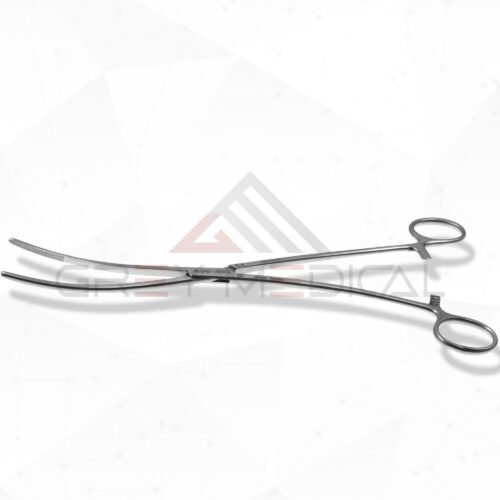In the intricate world of gynecological surgery, precision and reliability are paramount. Every instrument plays a critical role in ensuring patient safety and successful surgical outcomes. The uterine dressing forcep stands out as a fundamental tool, specifically designed for delicate procedures within the uterine cavity. Understanding its function, design, and proper handling is essential for healthcare professionals in this specialized field. This guide explores the significance of this indispensable instrument in modern gynecology.

Understanding the Uterine Dressing Forcep
A uterine dressing forcep is a long, slender instrument, typically with a length ranging from 24 to 25 cm, designed to reach the uterine cavity through the cervix. Its primary characteristic is the presence of serrated jaws at the tip, which can be straight or curved. This design allows for a firm yet gentle grip on surgical dressings, swabs, or small polyps without causing unnecessary trauma to the delicate uterine lining.
The elongated shaft ensures that surgeons can operate with clear visibility and control, even in deep and narrow spaces. The handles are often ratcheted, enabling the surgeon to lock the jaws in place. This feature is particularly useful when holding materials securely, freeing the surgeon’s hands for other tasks during a procedure. The instrument’s construction from high-grade stainless steel ensures it can be effectively sterilized and withstand the rigors of repeated use.
Key Applications in Gynecological Procedures
The versatility of the uterine dressing forcep makes it a staple in various gynecological and obstetric procedures. Its most common application is for introducing or removing gauze, sponges, and other dressing materials from the uterus. This is crucial for managing postpartum hemorrhage, cleaning the uterine cavity after a delivery, or packing the uterus to control bleeding.
Beyond handling dressings, these forceps are also used for grasping and removing small tissues, such as polyps or retained products of conception. In procedures like dilation and curettage (D&C), the forcep assists in clearing the uterine cavity. The gentle yet secure grip provided by its serrated tips is vital for ensuring that tissues are removed completely without damaging surrounding healthy structures.
The Importance of High-Quality Instrumentation
The quality of a surgical instrument directly impacts the outcome of a procedure. A poorly constructed tissue thumb forceps can pose significant risks, including tissue damage, instrument failure, or inadequate grip, leading to complications. High-quality forceps are crafted with precision, ensuring the jaws align perfectly and the locking mechanism is both secure and easy to release. This reliability gives surgeons the confidence they need to perform delicate maneuvers effectively.
Furthermore, superior materials and manufacturing processes contribute to the instrument’s longevity and ability to maintain its integrity through numerous sterilization cycles. Investing in well-made surgical tools is not just a matter of preference; it is a fundamental component of patient care and risk management in any clinical setting. The precise engineering of a top-tier uterine dressing forcep ensures it performs its function flawlessly every time.
Proper Care and Sterilization Protocols
Maintaining the sterility and functionality of surgical instruments like the uterine dressing forcep is a critical responsibility. After each use, instruments must undergo a thorough cleaning process to remove all biological debris. This initial step is essential, as any remaining organic material can interfere with the effectiveness of sterilization. Following cleaning, the forceps should be inspected for any signs of wear, damage, or corrosion.
Sterilization is typically achieved through autoclaving, which uses steam under pressure to kill all microorganisms. It is vital to follow the manufacturer’s guidelines for sterilization cycles to ensure the instrument’s longevity is not compromised. Proper handling and storage after sterilization are also crucial to prevent contamination before the next use. Adhering to these strict protocols ensures that every instrument is safe and ready for surgery.
Conclusion
The uterine dressing forcep is more than just a tool; it is an extension of the surgeon’s hands in critical moments of care. Its specialized design and function are central to the success of many gynecological procedures. At GreyMedical®, our dedication to innovation and excellence is reflected in the craft of every surgical instrument we produce. We understand that surgeons rely on our tools to deliver the best possible patient outcomes, which is why we are committed to providing instruments that embody precision, reliability, and superior quality.

